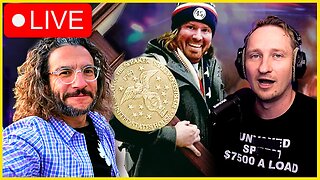Episode 1397: St Felix II
According to this view, Felix II was a pope who served as the 26th Bishop of Rome and held the position from 355 to 358 AD. He was born in Rome and came from a distinguished family. Felix II's pontificate was marked by various ecclesiastical issues and controversies. During his time as pope, there was an ongoing dispute within the Church over the Arian heresy, which denied the divinity of Jesus Christ. Emperor Constantius II, who was an Arian, tried to influence the papal election, leading to confusion and divisions within the Church.
Felix II upheld the orthodox Christian beliefs and opposed Arianism. Because of his stance against the Arian heresy and his refusal to embrace the teachings of the Arians, he faced significant challenges during his papacy.
The Arian controversy was one of the most significant theological debates in early Christianity and had far-reaching implications for the Church.
Arian Controversy:
The Arian controversy revolved around the teachings of Arius, a priest from Alexandria, Egypt. Arius espoused the view that Jesus Christ, though divine, was a created being and not co-eternal with God the Father. He argued that there was a time when Jesus did not exist and that He was subordinate to the Father. This view directly challenged the traditional Christian belief in the Holy Trinity and the divinity of Christ.
The Arian heresy gained traction in various parts of the Roman Empire, including among some members of the clergy and the imperial court. The controversy caused widespread division and strife within the Church, leading to fierce debates and even violence in some instances.
The time span of the Arian heresy can be roughly outlined as follows:
Origins (early 4th century): Arianism originated in the early 4th century, around the year 318 AD. Its founder was Arius, a presbyter from Alexandria, Egypt. Arius taught that Jesus Christ was a created being and not co-eternal with God the Father, which challenged the traditional Christian belief in the Holy Trinity.
Spread and Controversy (4th century): Arianism gained considerable popularity and support, especially among some members of the clergy and certain regions of the Roman Empire. The controversy over Arianism became more pronounced and divisive, leading to heated debates within the Church.
The First Council of Nicaea (325 AD): The Arian controversy reached a critical point in 325 AD when the Roman Emperor Constantine the Great convened the First Council of Nicaea to address the theological disputes. The Council affirmed the divinity of Jesus Christ and issued the Nicene Creed, which explicitly rejected Arian teachings.
Aftermath and Revival (mid to late 4th century): Despite the condemnation of Arianism at the Council of Nicaea, the controversy did not end immediately. Some emperors and bishops continued to support Arian beliefs, leading to ongoing tensions and political struggles within the Church.
The Second Ecumenical Council (381 AD): Arianism experienced a revival under Emperor Valens, and its influence persisted for several decades after the Council of Nicaea. However, the Second Ecumenical Council, held in Constantinople in 381 AD, reaffirmed the Nicene Creed and further condemned Arianism, solidifying the victory of orthodox Christianity over the heresy.
Decline and Disappearance: After the Second Ecumenical Council, Arianism gradually declined and lost its prominence in the Christian world. By the end of the 4th century and the beginning of the 5th century, Arianism had largely disappeared as a mainstream theological movement, although some small Arian communities persisted for a time.
In summary, the Arian heresy emerged in the early 4th century and lasted for several decades until the mid to late 4th century. Its influence continued to wane after the Second Ecumenical Council in 381 AD, leading to its eventual decline and disappearance as a significant theological movement in Christianity.
Political Intrigues and Influence:
During the papacy of St. Felix II, the Roman Empire was under the rule of Emperor Constantius II, who was an Arian sympathizer. The emperors wielded significant influence in religious matters and often interfered in papal elections and ecclesiastical affairs.
Constantius II's involvement in the appointment of bishops and popes led to contested elections and schisms within the Church. He supported various Arian bishops, including those who opposed St. Felix II's appointment as Pope. This interference weakened the authority of the papacy and further complicated the Arian controversy.
The Issue of Arian Consecration:
One of the most contentious matters during the papacy of St. Felix II was the issue of Arian consecrations. When an Arian bishop, Ursinus, was elected as Bishop of Rome in 366 AD, St. Felix II and his supporters contested his legitimacy. Ursinus was involved in a series of riots and disturbances in Rome during the election process, which added to the chaos.
Felix II and his supporters maintained that Ursinus was not duly elected and refused to recognize his authority. The dispute continued for several years and eventually resulted in violence between the factions. The Roman Emperor intervened, exiling both Felix II and Ursinus for a brief period.
Despite the controversies and challenges, St. Felix II remained steadfast in upholding orthodox Christian beliefs and resisting the Arian heresy. His papacy is regarded as an important period in the Church's history, as it contributed to the eventual triumph of Nicene Christianity over Arianism.
-
 14:48
14:48
Adam Does Movies
10 hours agoIs Star Wars DEAD To You? - Rant!
41.6K45 -
 1:05:07
1:05:07
Man in America
14 hours agoTHIS One Secret Threatens the ENTIRE Medical Industrial Complex
62K35 -
 1:01:56
1:01:56
TheMonicaCrowleyPodcast
12 hours agoThe Monica Crowley Podcast: People’s Revolt
34K9 -
 1:47:26
1:47:26
MTNTOUGH Fitness Lab
18 hours agoJOHN BARKLOW | Knowledge from Storms: Special Operations Instructor & Product Manager at Sitka Gear
34.2K2 -
 1:17:22
1:17:22
Kim Iversen
10 hours agoTit For Tat: Hunter's Political Token Conviction | Israel “It Depends On The Interpretation" Re: Ceasefire Deal
48.9K90 -
 2:01:04
2:01:04
Laura Loomer
11 hours agoEP52: THE GREAT REPLACEMENT: Trump and Biden Spar Over Border Policies Ahead of First Presidential Debate
44.3K21 -
 1:29:32
1:29:32
Glenn Greenwald
12 hours agoHunter Biden's Conviction Proves Media’s 2020 "Disinfo" Campaign; Joe Biden's Approval Ratings at Record Low After Trump Verdict; Liberals Embrace Prison Fantasies to Warn of Trump’s Dangers | SYSTEM UPDATE #281
79.5K110 -
 58:47
58:47
Edge of Wonder
11 hours agoThe Art of Counterfeiting Currency: CIA, China & Iran Sponsored Fake Money?
41.5K13 -
 2:23:58
2:23:58
WeAreChange
12 hours agoTIM's ON THE LIST! Ukraine's New American Target Lists Surface!
66.7K94 -
 2:04:25
2:04:25
The Quartering
13 hours agoAmerican Flags Banned In Gym, Hot Dog Champion Gets Woke, Based NBA Coach & Woke Gaming Meltdown
63.5K19